Nicolaie Popescu-Bodorin
ACSTL Cross-Sensor Comparison Competition Team 2013
Cross-Sensor Iris Recognition: LG4000-to-LG2200 Comparison
Jan 05, 2018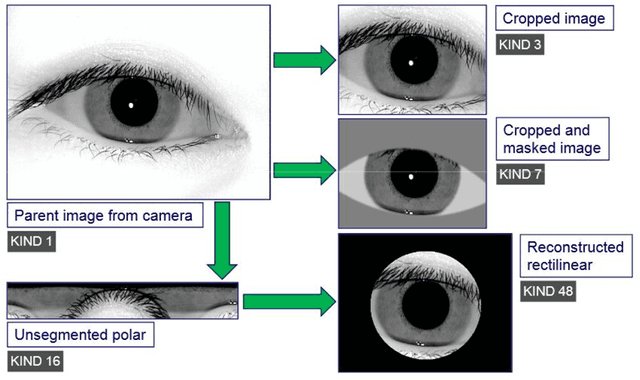
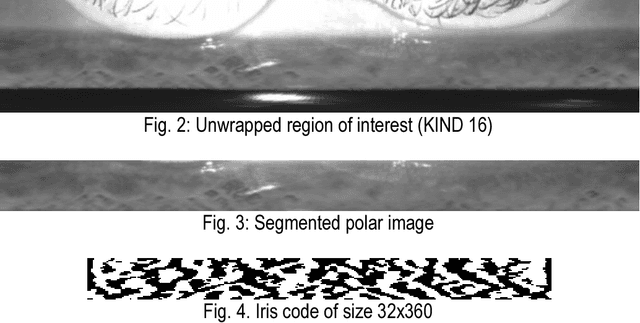
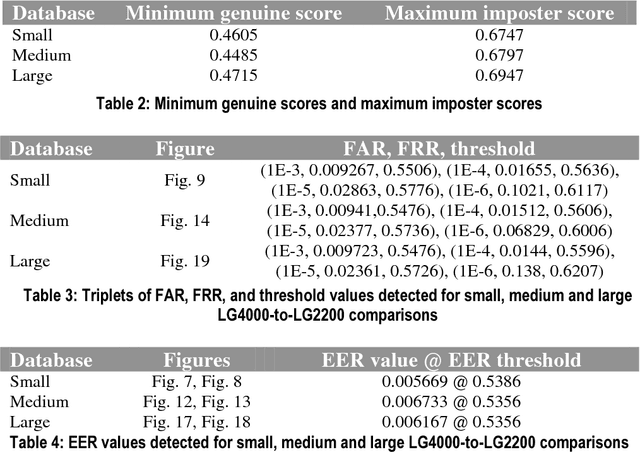
Abstract:Cross-sensor comparison experimental results reported here show that the procedure defined and simulated during the Cross-Sensor Comparison Competition 2013 by our team for migrating / upgrading LG2200 based to LG4000 based biometric systems leads to better LG4000-to-LG2200 cross-sensor iris recognition results than previously reported, both in terms of user comfort and in terms of system safety. On the other hand, LG2200-to-LG400 migration/upgrade procedure defined and implemented by us is applicable to solve interoperability issues between LG2200 based and LG4000 based systems, but also to other pairs of systems having the same shift in the quality of acquired images.
Examples of Artificial Perceptions in Optical Character Recognition and Iris Recognition
Sep 27, 2012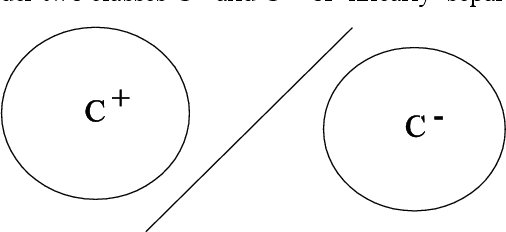
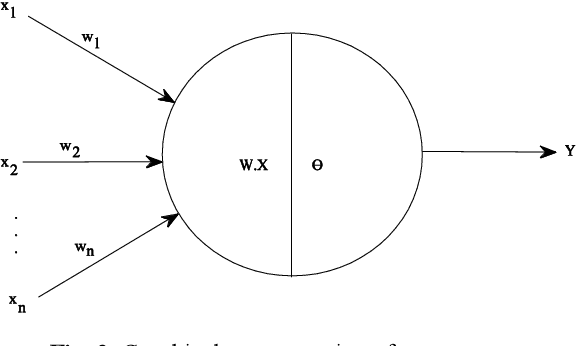
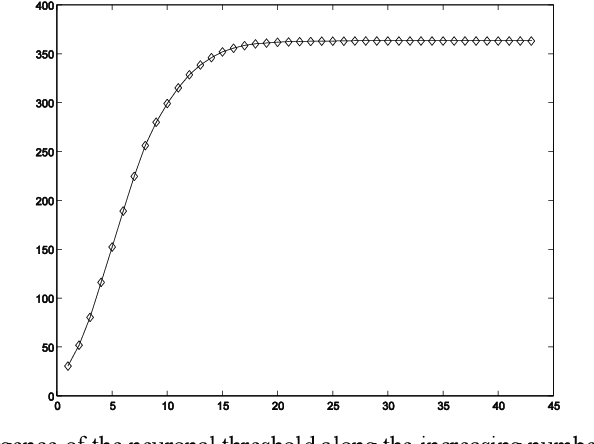
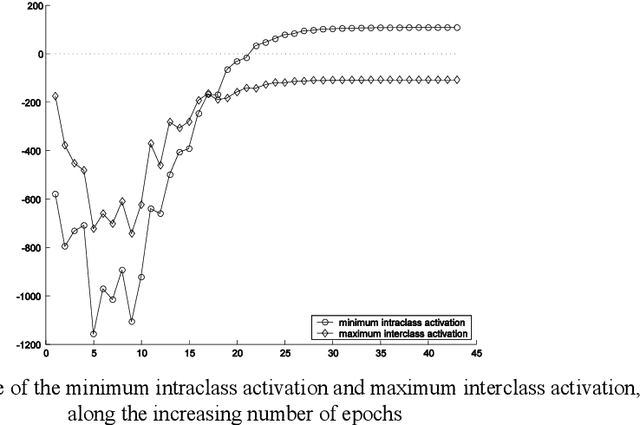
Abstract:This paper assumes the hypothesis that human learning is perception based, and consequently, the learning process and perceptions should not be represented and investigated independently or modeled in different simulation spaces. In order to keep the analogy between the artificial and human learning, the former is assumed here as being based on the artificial perception. Hence, instead of choosing to apply or develop a Computational Theory of (human) Perceptions, we choose to mirror the human perceptions in a numeric (computational) space as artificial perceptions and to analyze the interdependence between artificial learning and artificial perception in the same numeric space, using one of the simplest tools of Artificial Intelligence and Soft Computing, namely the perceptrons. As practical applications, we choose to work around two examples: Optical Character Recognition and Iris Recognition. In both cases a simple Turing test shows that artificial perceptions of the difference between two characters and between two irides are fuzzy, whereas the corresponding human perceptions are, in fact, crisp.
The Biometric Menagerie - A Fuzzy and Inconsistent Concept
Sep 27, 2012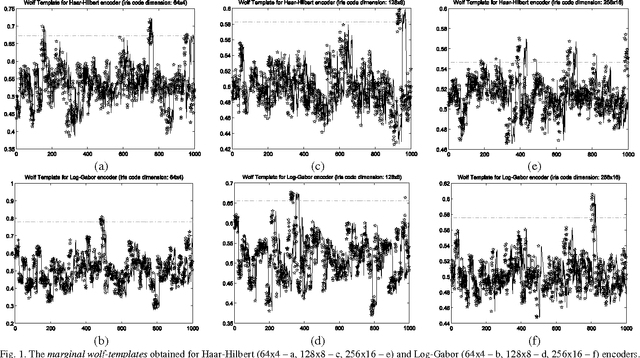
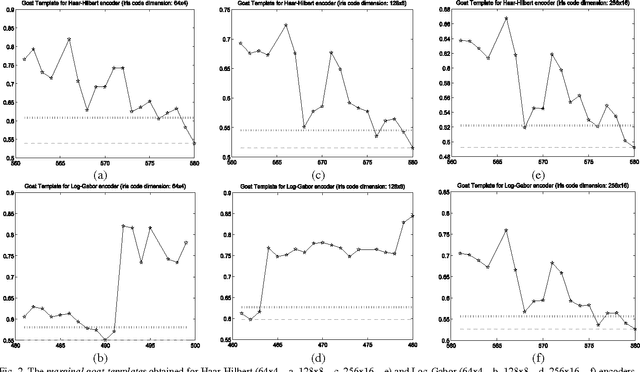
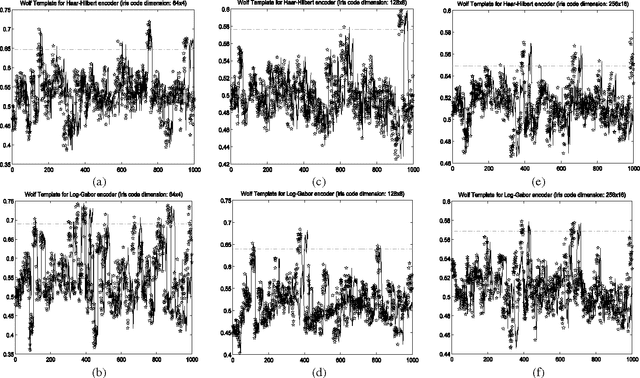
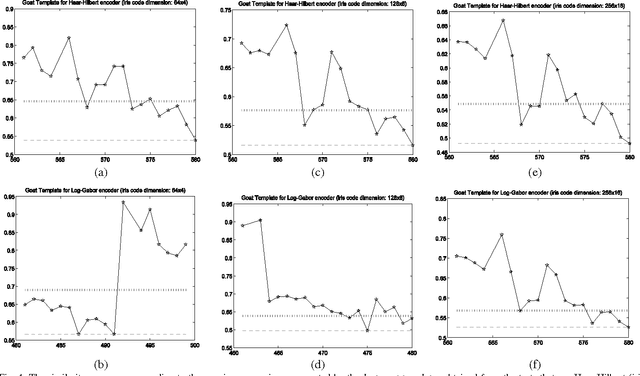
Abstract:This paper proves that in iris recognition, the concepts of sheep, goats, lambs and wolves - as proposed by Doddington and Yager in the so-called Biometric Menagerie, are at most fuzzy and at least not quite well defined. They depend not only on the users or on their biometric templates, but also on the parameters that calibrate the iris recognition system. This paper shows that, in the case of iris recognition, the extensions of these concepts have very unsharp and unstable (non-stationary) boundaries. The membership of a user to these categories is more often expressed as a degree (as a fuzzy value) rather than as a crisp value. Moreover, they are defined by fuzzy Sugeno rules instead of classical (crisp) definitions. For these reasons, we said that the Biometric Menagerie proposed by Doddington and Yager could be at most a fuzzy concept of biometry, but even this status is conditioned by improving its definition. All of these facts are confirmed experimentally in a series of 12 exhaustive iris recognition tests undertaken for University of Bath Iris Image Database while using three different iris code dimensions (256x16, 128x8 and 64x4), two different iris texture encoders (Log-Gabor and Haar-Hilbert) and two different types of safety models.
Exploring New Directions in Iris Recognition
Jul 13, 2011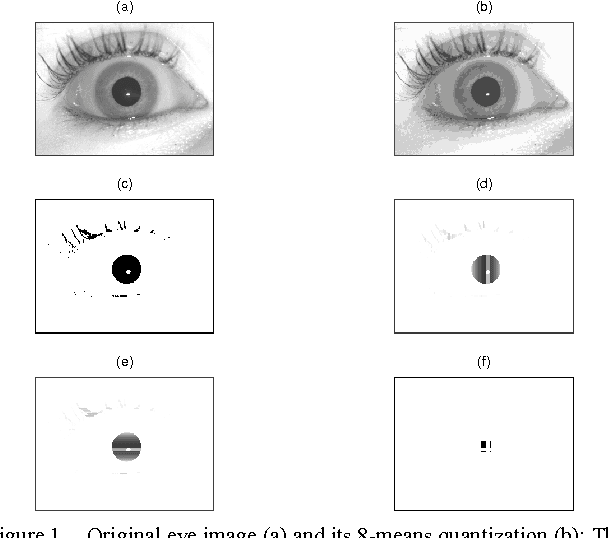
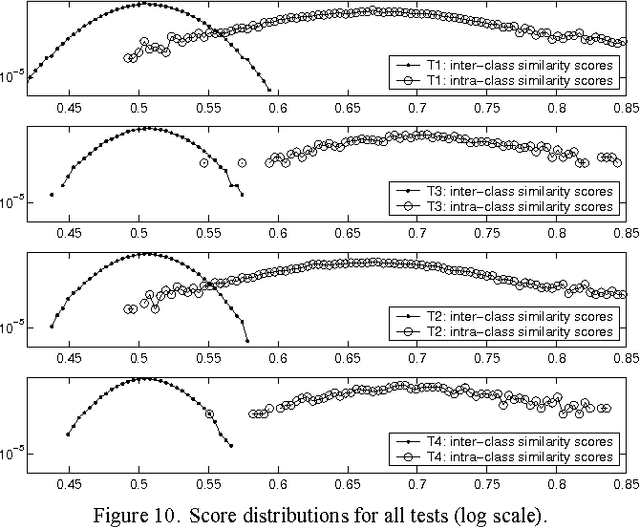
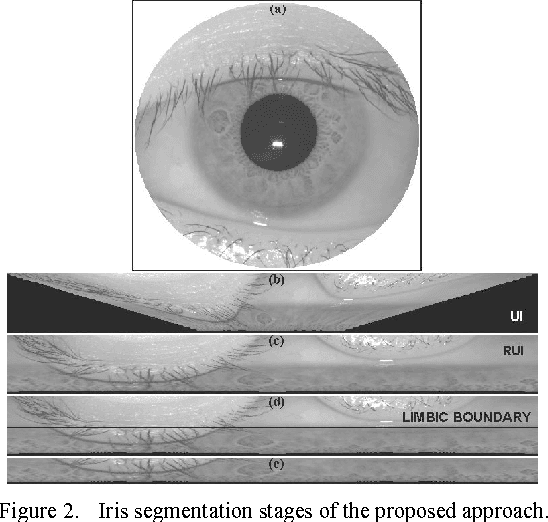
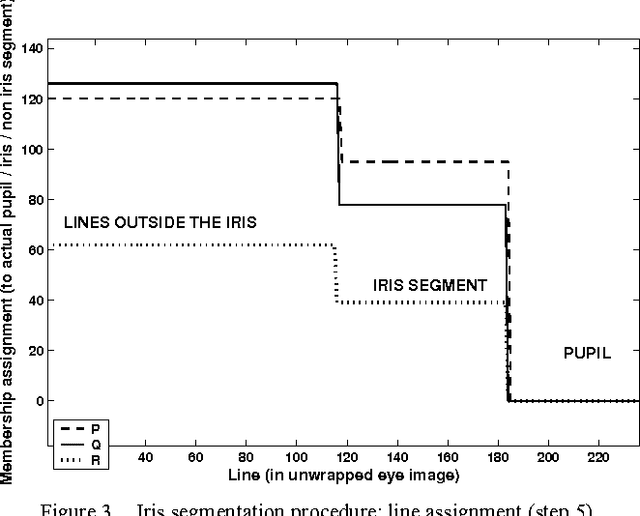
Abstract:A new approach in iris recognition based on Circular Fuzzy Iris Segmentation (CFIS) and Gabor Analytic Iris Texture Binary Encoder (GAITBE) is proposed and tested here. CFIS procedure is designed to guarantee that similar iris segments will be obtained for similar eye images, despite the fact that the degree of occlusion may vary from one image to another. Its result is a circular iris ring (concentric with the pupil) which approximates the actual iris. GAITBE proves better encoding of statistical independence between the iris codes extracted from different irides using Hilbert Transform. Irides from University of Bath Iris Database are binary encoded on two different lengths (768 / 192 bytes) and tested in both single-enrollment and multi-enrollment identification scenarios. All cases illustrate the capacity of the newly proposed methodology to narrow down the distribution of inter-class matching scores, and consequently, to guarantee a steeper descent of the False Accept Rate.
* 8 pages, 10 figures, 11th Int. Symp. on Symbolic and Numeric Algorithms for Scientific Computing, 2009
A Fuzzy View on k-Means Based Signal Quantization with Application in Iris Segmentation
Jul 13, 2011Abstract:This paper shows that the k-means quantization of a signal can be interpreted both as a crisp indicator function and as a fuzzy membership assignment describing fuzzy clusters and fuzzy boundaries. Combined crisp and fuzzy indicator functions are defined here as natural generalizations of the ordinary crisp and fuzzy indicator functions, respectively. An application to iris segmentation is presented together with a demo program.
Exploratory simulation of an Intelligent Iris Verifier Distributed System
Jun 18, 2011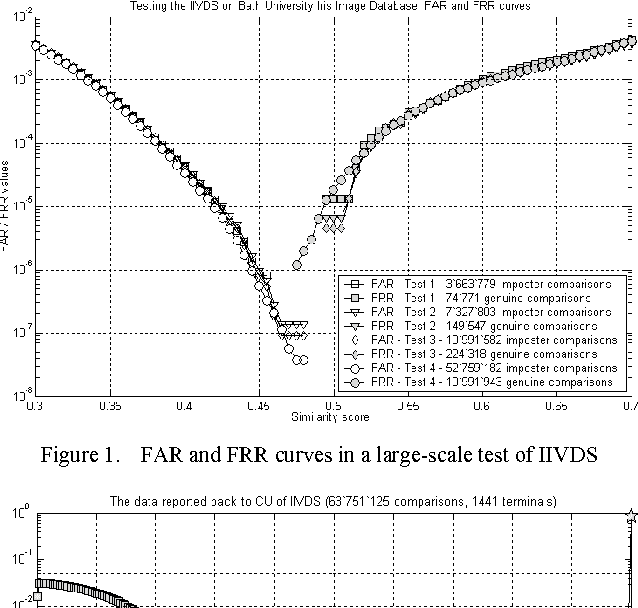
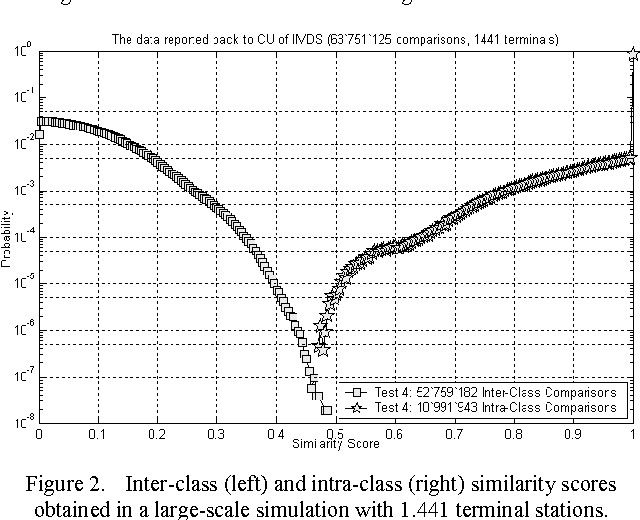
Abstract:This paper discusses some topics related to the latest trends in the field of evolutionary approaches to iris recognition. It presents the results of an exploratory experimental simulation whose goal was to analyze the possibility of establishing an Interchange Protocol for Digital Identities evolved in different geographic locations interconnected through and into an Intelligent Iris Verifier Distributed System (IIVDS) based on multi-enrollment. Finding a logically consistent model for the Interchange Protocol is the key factor in designing the future large-scale iris biometric networks. Therefore, the logical model of such a protocol is also investigated here. All tests are made on Bath Iris Database and prove that outstanding power of discrimination between the intra- and the inter-class comparisons can be achieved by an IIVDS, even when practicing 52.759.182 inter-class and 10.991.943 intra-class comparisons. Still, the test results confirm that inconsistent enrollment can change the logic of recognition from a fuzzified 2-valent consistent logic of biometric certitudes to a fuzzified 3-valent inconsistent possibilistic logic of biometric beliefs justified through experimentally determined probabilities, or to a fuzzified 8-valent logic which is almost consistent as a biometric theory - this quality being counterbalanced by an absolutely reasonable loss in the user comfort level.
* 4 pages, 2 figures, latest version: http://fmi.spiruharet.ro/bodorin/
From Cognitive Binary Logic to Cognitive Intelligent Agents
Jun 18, 2011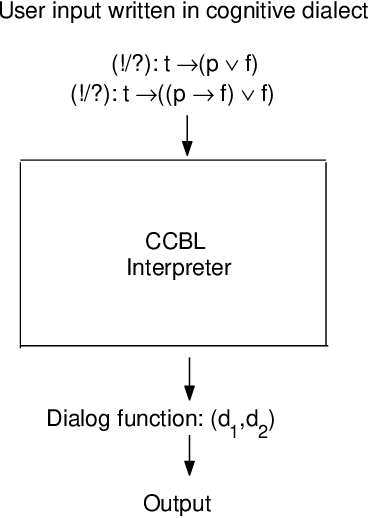
Abstract:The relation between self awareness and intelligence is an open problem these days. Despite the fact that self awarness is usually related to Emotional Intelligence, this is not the case here. The problem described in this paper is how to model an agent which knows (Cognitive) Binary Logic and which is also able to pass (without any mistake) a certain family of Turing Tests designed to verify its knowledge and its discourse about the modal states of truth corresponding to well-formed formulae within the language of Propositional Binary Logic.
* 3 figures, 4 pages, latest version: http://fmi.spiruharet.ro/bodorin/
Comparing Haar-Hilbert and Log-Gabor Based Iris Encoders on Bath Iris Image Database
Jun 12, 2011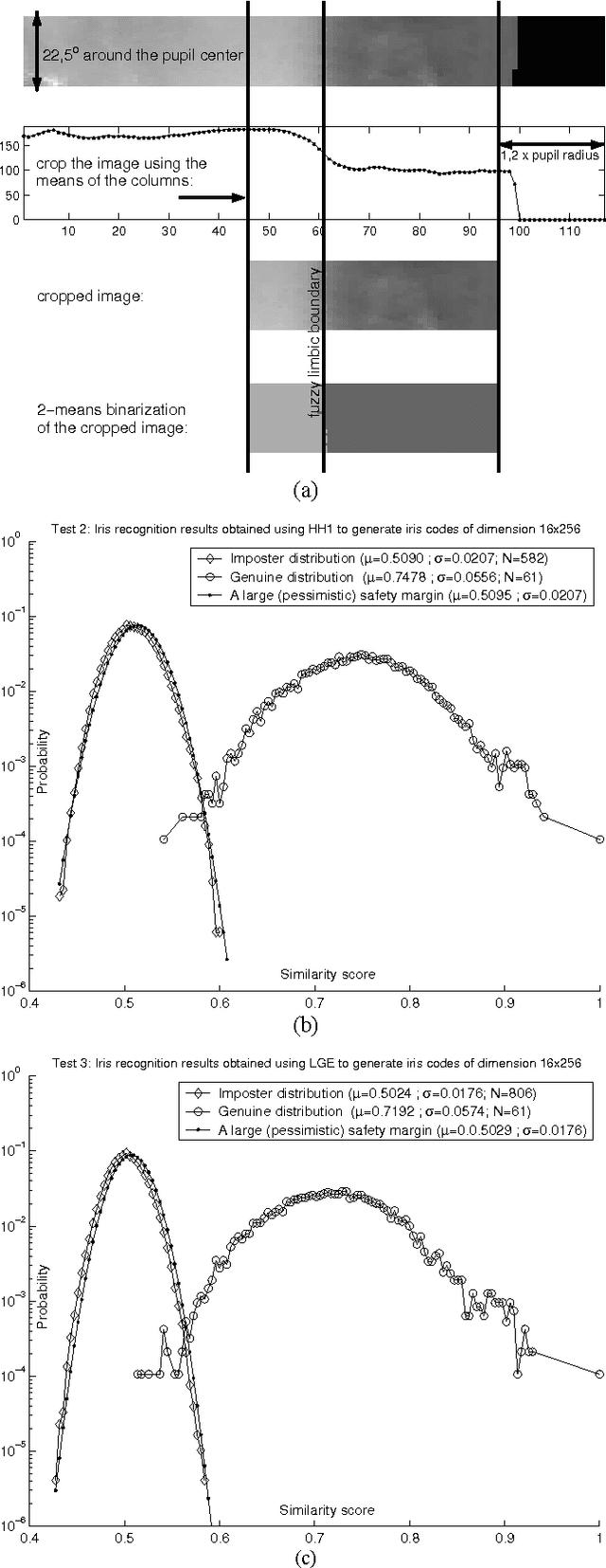
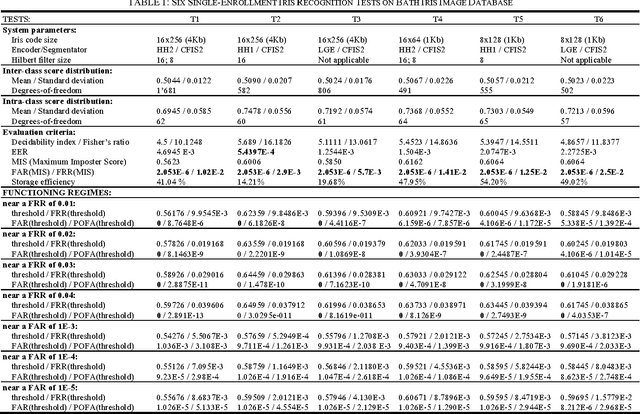
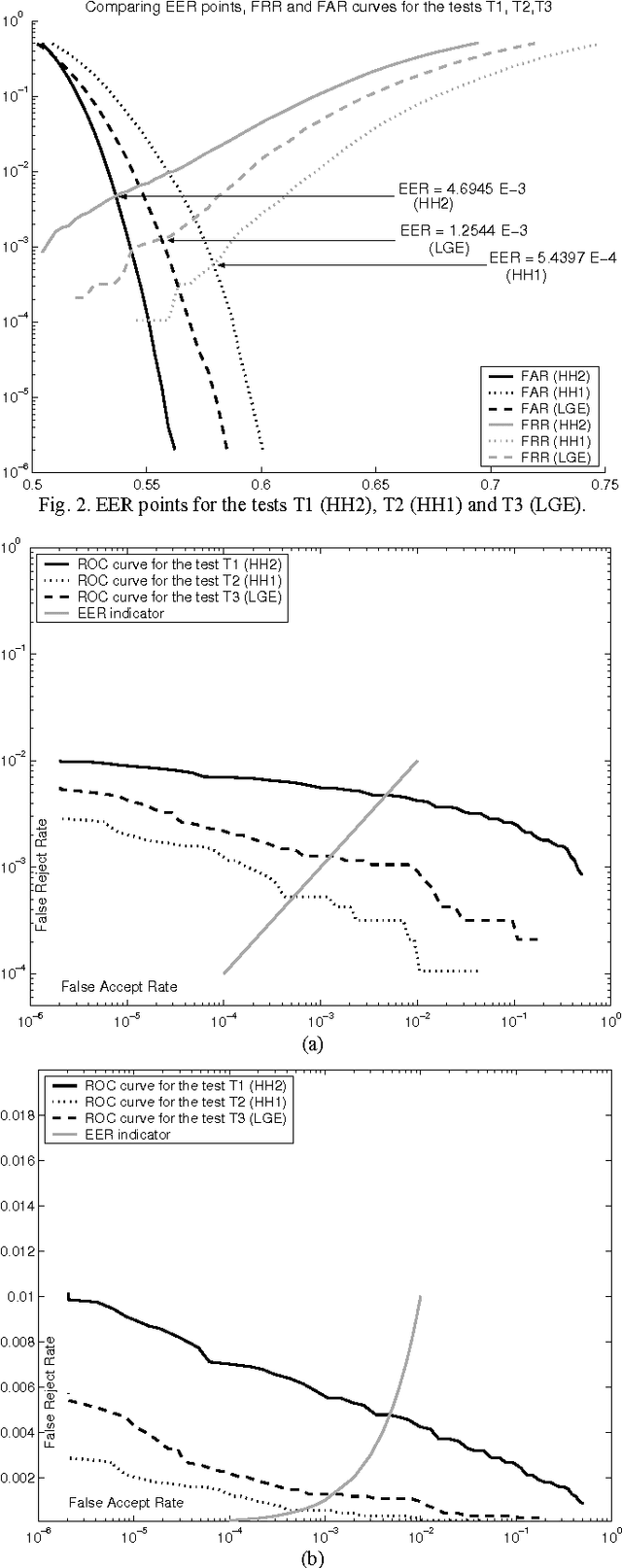
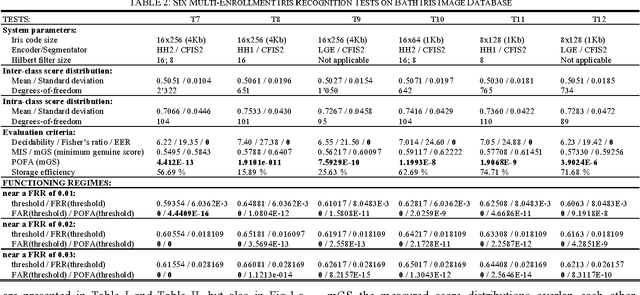
Abstract:This papers introduces a new family of iris encoders which use 2-dimensional Haar Wavelet Transform for noise attenuation, and Hilbert Transform to encode the iris texture. In order to prove the usefulness of the newly proposed iris encoding approach, the recognition results obtained by using these new encoders are compared to those obtained using the classical Log- Gabor iris encoder. Twelve tests involving single/multienrollment and conducted on Bath Iris Image Database are presented here. One of these tests achieves an Equal Error Rate comparable to the lowest value reported so far for this database. New Matlab tools for iris image processing are also released together with this paper: a second version of the Circular Fuzzy Iris Segmentator (CFIS2), a fast Log-Gabor encoder and two Haar-Hilbert based encoders.
* 6 pages, 4 figures, latest version: http://fmi.spiruharet.ro/bodorin/
 Add to Chrome
Add to Chrome Add to Firefox
Add to Firefox Add to Edge
Add to Edge